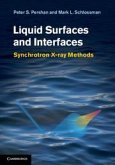Fifty years ago solution chemistry occupied a major fraction of physical chemistry textbooks, and dealt mainly with classical thermodynamics, phase equilibria, and non-equilibrium phenomena, especially those related to electrochemistry. Much has happened in the intervening period, with tremendous advances in theory and the development of important new experimental techniques. This book brings the reader through the developments from classical macroscopic descriptions to more modern microscopic details.
Hinweis: Dieser Artikel kann nur an eine deutsche Lieferadresse ausgeliefert werden.
Hinweis: Dieser Artikel kann nur an eine deutsche Lieferadresse ausgeliefert werden.








